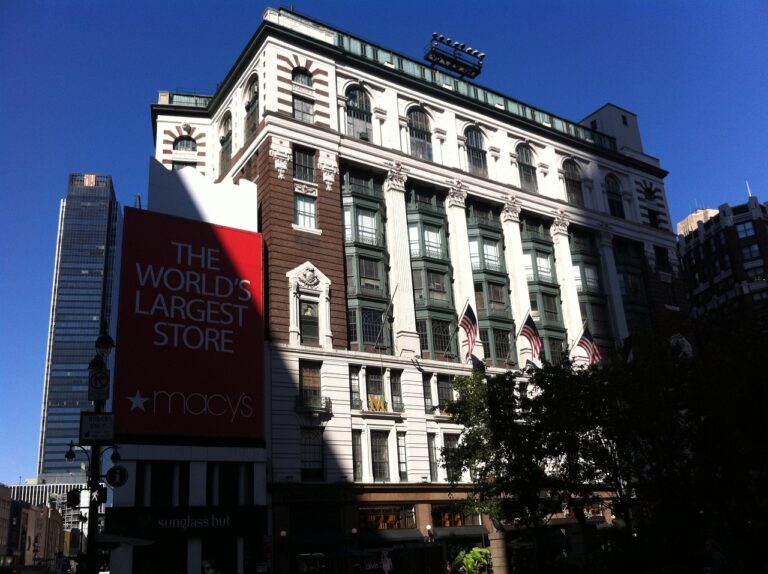The Future of Brick-and-Mortar Stores in the Digital Age
Brick-and-mortar stores have been a cornerstone of retail for centuries, providing customers with a tangible shopping experience that cannot be replicated online. However, the rise of e-commerce and digital technology has revolutionized the retail landscape, posing challenges for traditional brick-and-mortar stores. In this article, we will explore the future of brick-and-mortar stores in the digital age and discuss strategies that retailers can implement to stay relevant and thrive in an increasingly digital world.
The Rise of E-Commerce
In recent years, e-commerce has experienced tremendous growth, with online sales accounting for a significant portion of overall retail sales. The convenience of shopping online, coupled with advancements in technology such as mobile shopping apps and virtual fitting rooms, has made online shopping a preferred choice for many consumers.
As a result, brick-and-mortar stores have faced increasing competition from e-commerce giants such as Amazon, which offer a wide range of products and fast delivery options. To stay competitive, brick-and-mortar retailers must adapt to the changing retail landscape and find ways to leverage digital technology to enhance the customer experience.
Enhancing the In-Store Experience
One way that brick-and-mortar stores can differentiate themselves from online retailers is by enhancing the in-store experience. By creating a welcoming and engaging environment, brick-and-mortar stores can attract customers and encourage them to spend more time browsing and making purchases.
One strategy that retailers can use to enhance the in-store experience is by implementing technology such as smart mirrors and interactive displays. These technologies can provide customers with personalized recommendations, virtual try-on experiences, and product information, making the shopping experience more interactive and engaging.
Omni-Channel Retailing
Another key strategy for brick-and-mortar stores in the digital age is omni-channel retailing, which involves seamlessly integrating online and offline channels to provide customers with a unified shopping experience. By offering services such as click-and-collect, in-store pickup, and online returns, retailers can cater to the preferences of customers who prefer to shop both online and in-store.
Omni-channel retailing also allows retailers to gather valuable data on customer behavior and preferences, which can be used to personalize the shopping experience and improve inventory management. By leveraging data analytics and customer insights, brick-and-mortar stores can optimize their operations and better meet the needs of their customers.
Creating Community and Brand Loyalty
In a world where online shopping is on the rise, brick-and-mortar stores can differentiate themselves by creating a sense of community and building brand loyalty among customers. By hosting events, workshops, and exclusive promotions, retailers can engage with customers on a personal level and foster a sense of belonging.
Building strong relationships with customers can lead to repeat business and word-of-mouth referrals, which are essential for long-term success in the retail industry. By focusing on creating a positive and memorable shopping experience, brick-and-mortar stores can establish a loyal customer base and stand out in a crowded marketplace.
FAQs
Q: Are brick-and-mortar stores becoming obsolete in the digital age?
A: While brick-and-mortar stores face challenges from e-commerce, they are not becoming obsolete. By adapting to the changing retail landscape and leveraging digital technology, brick-and-mortar stores can continue to thrive and provide customers with a unique shopping experience.
Q: How can brick-and-mortar stores compete with e-commerce giants like Amazon?
A: Brick-and-mortar stores can compete with e-commerce giants by enhancing the in-store experience, implementing omni-channel retailing strategies, and building strong relationships with customers. By offering personalized services and creating a sense of community, brick-and-mortar stores can differentiate themselves from online retailers.
Q: What role does technology play in the future of brick-and-mortar stores?
A: Technology plays a crucial role in the future of brick-and-mortar stores, enabling retailers to enhance the in-store experience, optimize operations, and gather valuable data on customer behavior. By leveraging technology such as smart mirrors and data analytics, brick-and-mortar stores can stay competitive and meet the evolving needs of customers.
Overall, the future of brick-and-mortar stores in the digital age is promising, with retailers embracing new technologies and strategies to provide customers with a unique and personalized shopping experience. By adapting to changing consumer preferences and leveraging digital innovation, brick-and-mortar stores can continue to thrive and remain an important part of the retail landscape.







